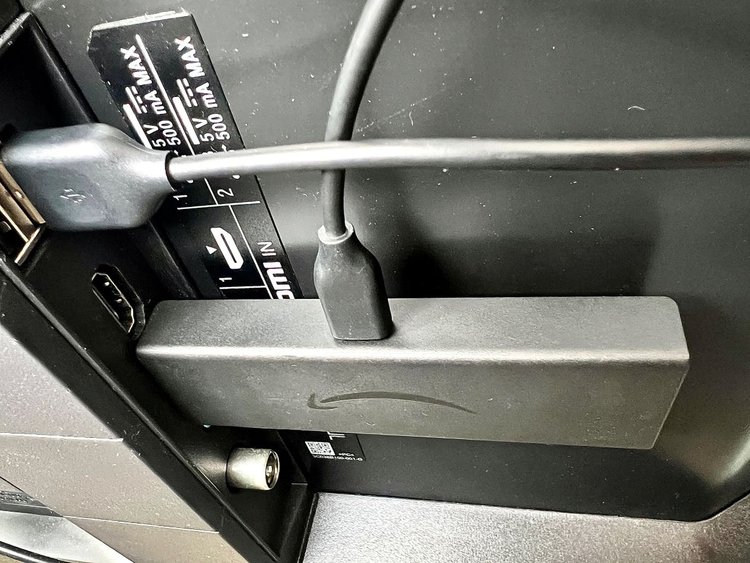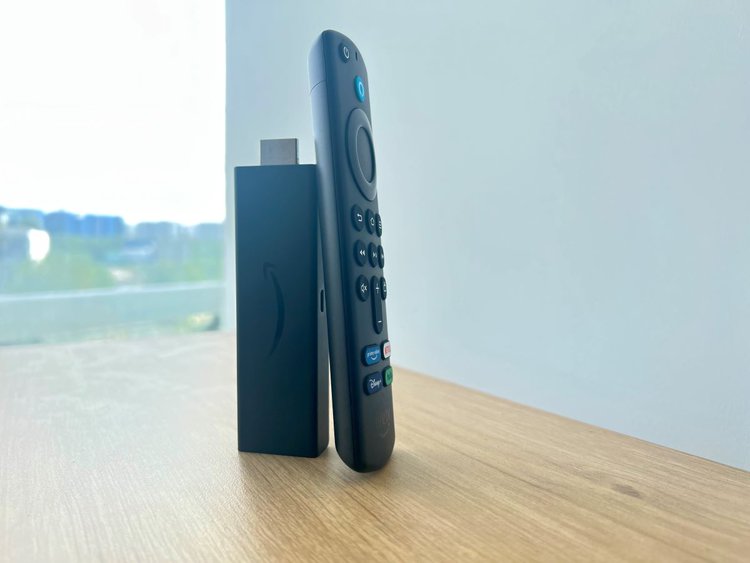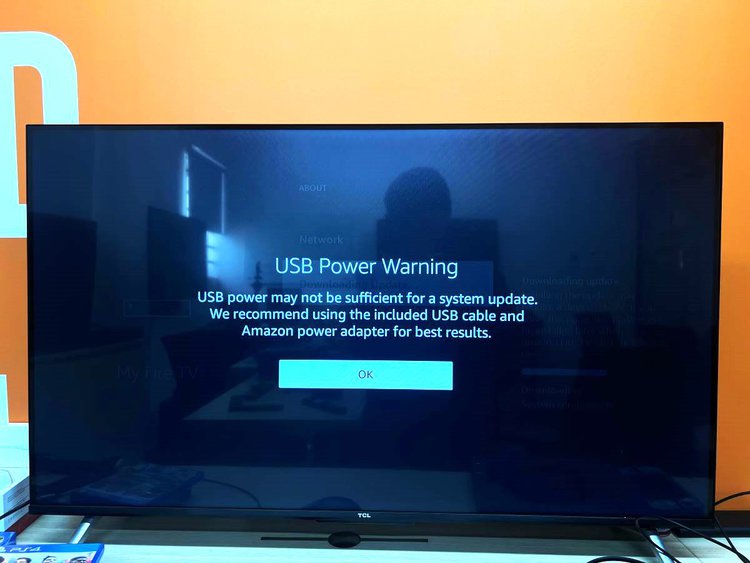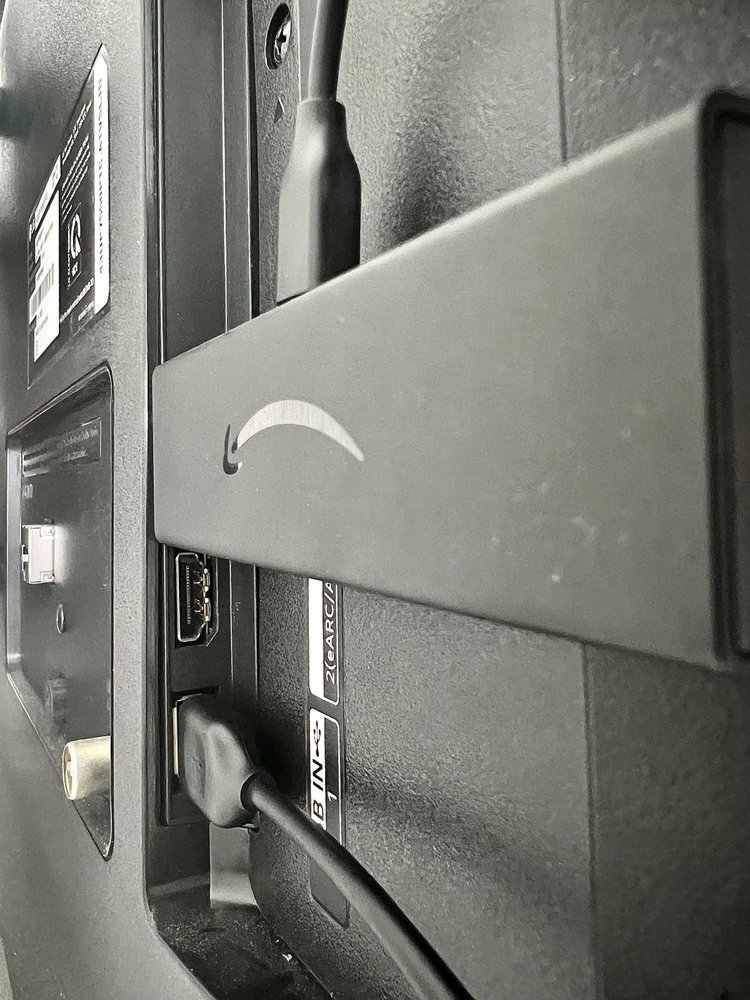Is Your TV’s USB Port Enough to Power Any Firestick Models?

- A Fire TV Stick can be powered by a TV’s USB port, but older TVs may show “insufficient power” alerts or cause the stick to reboot.
- Firesticks require around 5W, but USB 2.0 delivers 2.5W and USB 3.0 provides 4.5W only, which might still power the stick but can lead to issues with power-intensive tasks.
- To use a USB power adapter: Plug its micro-USB into the Firestick and USB-A into the TV > Insert the Firestick into the TV’s HDMI port.
Many Fire TV Stick users wonder if they can power their device straight from their TV’s USB port.
If you’ve found yourself querying your TV’s USB power output or how it matches up with the Firestick’s requirements, you’re not alone.
This article delves into the compatibility between the two and offers insights on how to best harness your TV’s USB for optimal Firestick performance.
Stay tuned to address those burning questions and ensure your streaming sessions remain uninterrupted.
Quick Navigation
How Much Power Does Your Fire TV Stick Need to Work?
All Fire TV Sticks require an amp (1,000 milliamps) of power. However, their voltage figures would be slightly different.
The varying voltage numbers indicate that the electrical pressure needed to supply the amp of power varies with the devices.
If the different devices do not match their voltage requirements, they may not function safely and reliably.
| Models | Voltage – Amperage | Wattage |
| 1st-Gen Fire TV Stick | 5V – 1A | 5W |
| 2nd-Gen Fire TV Stick | 5V – 1A | 5W |
| 1st-Gen Fire TV Stick 4K | 5.25V – 1A | 5W |
| 3rd-Gen Fire TV Stick (Lite included) | 5.25V – 1A | 5W |
| 1st-Gen Fire TV Stick 4K Max | 5.25V – 1A | 5W |
How Much Power Can Your Smart TV’s USB Port Supply?

The amount of power the USB port of a smart TV can supply depends on the model, manufacturer, port type, etc.
Although USB 3.0 ports for TVs are available, most TVs still feature the USB 2.0 standard. The Sony XR A90J, for example, is one of the few existing smart TVs with the newer port.
The USB 2.0 spec delivers 5V at 500 mA (0.5A), meaning 2.5 watts of total power output. USB 3.0 port offers 0.9A at 5V. The total power output is 2.5W and 4.5W for USB 2.0 and 3.0, respectively.
That means, on paper, both ports don’t meet a Fire TV Stick’s 5W power requirements. But the two USB ports can still power and turn on the device. They also meet the basic power requirements of a Chromecast, Roku, and other streaming devices.
However, specific power-intensive tasks or advanced streaming features could need extra power. Those may include 4K streaming, HDR content, graphics-intensive gaming, etc.
In such scenarios, your Fire TV Stick or other streaming device powered with a USB 2.0 or even the 3.0 port could struggle or exhibit problems, pushing you to draw power from the wall.
When that happens, your Fire TV Stick doesn’t throttle performance. Instead, it stops its operations, indicating the same with the “insufficient power” message each time you insert the device into a USB 2.0 port.
But if you’d like to continue using the TV’s USB port regardless, continue reading.
My Story

Our first encounter with the Fire TV Stick 4K was not the best.
After I plugged it into the USB ports of our TVs (Samsung, LG, Sony, and TCL), the device didn’t work and showed us the “insufficient power” message. That was in March of 2023. I tried sticking the device into the USB port of all the TVs to no avail.
I tried doing it again in June 2023, and the USB (2.0) ports were good enough to power the Fire TV Stick 4K with no issues.
It’s not clear what changed. But I assume it could have been a software update or change in power requirements for the Fire TV Stick from Amazon’s side.
Therefore, don’t lose hope if the USB 2.0 port doesn’t power your Fire TV Stick. Try again sometime later. In the interim, you can always pair the device with its wall adapter.
Note that even if the USB 2.0 port successfully powers your Fire TV Stick in later attempts, expect certain resource-intensive tasks to remain unresponsive like the image below.
In that case, the following implementation will come in handy.
How to Power Your Fire TV Stick with a TV’s USB Port? And How to Address the Low Power Issue?

The following are scenarios in which your Fire TV Stick has no option but to draw power from your TV’s USB port:
- No free power outlet near the Fire TV Stick.
- The Fire TV Stick’s adapter/plug is broken/misplaced.
- You want the setup to look clean by not allowing a cable between the Fire TV Stick and the wall outlet.
If the USB port is not providing enough power to your Fire TV Stick, you can supply more power using this QFUP USB Power Adapter . The power adapter ensures no more pesky “insufficient power” pop-up notifications or premature resets.
Here is how you use the adapter:
- Plug the adapter’s micro-USB end into the Fire TV Stick.
- Insert the streaming stick into your TV’s HDMI port.
- Grab the adapter’s USB-A connector and plug it into the TV, and you’re done.
The adapter’s compact micro-USB to USB-A replaces the relatively long cable the Fire TV Stick comes with, eliminating the cable mess or dangling cord behind the TV.
The adapter has a built-in battery storage system that draws energy from your TV’s USB port, stores it, and transmits it to your Fire TV Stick while performing energy pass-throughs simultaneously. This ensures the streaming stick remains powered throughout.
Note that the adapter powers your Fire TV Stick only when the TV is on. Some TV USB ports could be active even when the device is powered off, delivering energy to the plugged-in streaming stick.
To learn more about the adapter, check the product page shared above.
Conclusion
To conclude, your TV’s USB port is robust enough to power your Fire TV Stick. However, in some cases, you’ll need the wall outlet or maybe the interim adapter mentioned above.
That is especially true when playing resource-intensive content or doing a software update because the streaming stick consumes more power during the update activity than usual.
Even then, you can use the USB port and get by. Just check if the USB port works with those applications.
If you have encountered slowdowns or failed update processes while watching graphics-rich content or updating Fire TV software using the TV’s port, using the wall adapter is recommended.
But because the TV USB port is more convenient than reaching out for the wall, always use the USB port first. As mentioned earlier, it can more than deliver the necessary power your Fire TV Stick needs. Switch to the wall adapter only when you face issues.
On the contrary, if reaching out for the power outlet is not inconvenient at all, and you cannot afford any performance slowdowns or compromises during streaming, use the wall adapter.
You never know when the Fire TV Stick shall update its software in the background. That is why even Amazon recommends using the bundled-in wall adapter on the Fire TV Stick product packaging.
Catherine Tramell has been covering technology as a freelance writer for over a decade. She has been writing for Pointer Clicker for over a year, further expanding her expertise as a tech columnist. Catherine likes spending time with her family and friends and her pastimes are reading books and news articles.


